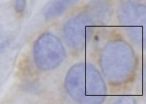(Press-News.org) PHILADELPHIA — Treatments for childhood cancers are increasingly successful with cure rates approaching 80%, but success often comes with a downside for the surviving men: the cancer treatments they received as boys can leave them sterile as adults. Now, a research team led by Ralph Brinster of the University of Pennsylvania School of Veterinary Medicine has completed a 14-year experiment that gives hope for a technique that could restore their fertility.
Brinster is the Richard King Mellon Professor of Reproductive Physiology at Penn Vet and was recently awarded the National Medal of Science for his lifetime of research on the genetics of the mammalian germline, the cells that give rise to sperm and eggs.
In his most recent research, Brinster collaborated with fellow members of the Department of Animal Biology at Penn Vet, with members of the Department of Cell and Developmental Biology at Penn's Perelman School of Medicine and with the Penn Bioinformatics Core.
Their study was published in the journal Human Reproduction.
For males, fertility begins with spermatogonial stem cells, which are present at birth, embedded in the basement membrane of the testes' seminiferous tubules. As a boy approaches puberty, these cells begin to make daughter cells that eventually become sperm. While they normally continue this process throughout a post-pubescent man's life, factors like radiation and chemotherapy drugs can destroy them, rendering him sterile.
About 1 in 3 boys surviving childhood cancer will be in danger of having severely decreased fertility as an adult; as many as 1 in 5,000 men of reproductive age currently suffer this serious quality-of-life problem as a result. Adult men who undergo cancer treatment that might damage their fertility can preemptively freeze their sperm, an option not available to pre-pubescent boys. But if a sample of a boy's spermatogonial stem cells could be extracted and preserved before cancer treatment and re-implanted after the boy reached adulthood, this fertility problem could be circumvented.
"There are a number of places, including at the Children's Hospital of Philadelphia," Brinster said, "that are already freezing cells for patients to use later, with the expectation that the necessary culture system and implantation techniques will be developed. A logical question for patients to ask is, How do we know that, after 10 years or more of being stored, these cells are any good? That's what our study addresses."
The techniques for extracting these cells and re-implanting them have been developed, so a critical question for researchers was whether spermatogonial stem cells could survive the decade-plus period they might need to remain frozen.
Fortunately, Brinster had a large collection of cryopreserved spermatogonial stem cells stored in the mid-'90s. The collection consisted mostly of cells taken from mice but included a small number of rat, rabbit and baboon samples. Between their age and variety, these samples represented an important resource to address questions regarding long-term cryopreservation of spermatogonial stem cells, before the technique could be used in humans.
After being thawed, the spermatogonial stem cells of rabbits and baboons were labeled with a fluorescent dye so that the researchers could track where in the testes they would eventually migrate and embed once they were implanted in mice. This was a critical step for the rabbit and baboon cells, which lacked appropriate experimental recipients; once implanted in mice, the studies showed that the cells migrated correctly and embedded in the recipient testes' basement membrane, indicating their viability.
A complete functional test could only be done for the mouse spermatogonial stem cells, as they could be implanted into mice and tested to see if they could produce sperm, and whether that sperm could lead to healthy offspring. After demonstrating that the cryopreserved cells implanted in the right region of the testes and underwent normal spermatogenesis, the researchers extracted the sperm and successfully fertilized eggs in vitro.
One of the recipient mice was also placed with females and successfully sired offspring. The offspring resulting from eggs fertilized in vitro as well as those resulting from natural mating all produced normal appearing young. Most importantly, the offspring arising from the cryopreserved spermatogonial stem cells appeared free of genetic damage.
This experiment clearly points in the right direction for the feasibility of a similar fertility treatment in humans.
"Human and animal spermatagonial stem cells have been successfully frozen for short periods of time, but this is completely different," Brinster said. "Here we had cells frozen for over a decade that implanted in the right place and made sperm, and that sperm made offspring without apparent genetic defects."
###In addition to Brinster, the research was conducted by research associates Xin Wu, Shaun M. Goodyear and Mary R. Avarbock of the Department of Animal Biology at Penn Vet; graduate student Lara K. Abramowitz and professor Marisa S. Bartolomei of the Department of Cell and Developmental Biology at Penn's Perelman School of Medicine; and John W. Tobias, director of the Penn Bioinformatics Core.
The research was supported by the National Institutes of Child Health and Human Development, the Institute of General Medicine and the Robert J. Kleberg Jr. and Helen C. Kleberg Foundation.
Penn research points to new way of preserving fertility for boys undergoing cancer treatment
2012-03-29
ELSE PRESS RELEASES FROM THIS DATE:
Mill Brook Industries Explains Labor Cost Savings When Using Folding Tables
2012-03-29
Mill Brook Industries wants business owners to know that they can save considerable man hours and storage space using folding tables. Managing events is a fast-paced business, and the time required to set up and break down folding tables is considerably less than that required by a conventional fixed leg table. Folding tables require far less storage space than fixed leg tables and can often be easily moved and set up by two people. Utilizing table carts can maximize labor when time and expenses are crucial factors in an operation.
Mill Brook Industries understands ...
Does BMI affect post-surgical complications, survival in esophageal adenocarcinoma?
2012-03-29
TAMPA, Fla. -- Researchers at Moffitt Cancer Center in Tampa, Fla., have found – contrary to previous studies linking inferior outcomes in patients with gastrointestinal malignancies to higher body mass index (BMI) – that in their study of BMI and negative outcomes, there was no such link. They concluded that BMI was not associated with either surgical complications or esophageal cancer patient survival.
Their study was published in the current online issue of the Journal of Gastrointestinal Surgery, published by the Society for Surgery of the Alimentary Tract.
"The ...
IMRT reduces risk of side effects in breast cancer patients
2012-03-29
Breast cancer patients treated with intensity modulated radiation therapy (IMRT) instead of standard whole breast irradiation (WBI) have a lower incidence of acute or chronic toxicities, according to a study in Practical Radiation Oncology (PRO), the official clinical practice journal of the American Society for Radiation Oncology (ASTRO).
Researchers are constantly conducting studies to determine the most effective breast cancer treatment that also reduces the incidence of potential side effects, including skin inflammation, swelling and infection.
Researchers in this ...
Researchers identify genetic basis of tropical foot and leg lymphedema
2012-03-29
Farmers in the highlands of southern Ethiopia scratch out a subsistence living from the region's volcanic red clay. The soil supports the farms, but fine-grained, volcanic rock particles in the dirt threaten the farmers and their families. Continual exposure of bare feet to the volcanic soil causes 1 in 20 people to develop a painful inflammation of the lower extremities that, over time, leads to foot disfigurement. Doctors call it podoconiosis. The locals call it mossy foot. And those affected suffer social stigma as well as debilitating discomfort.
Now, researchers ...
J. Martinez Fine Coffees Offers Coffee of the Month Club
2012-03-29
J. Martinez & Company knows gourmet coffee. It is a multi-generational family business as well as a personal passion for owner John Martinez. Over the years, J. Martinez & Company has gotten to know the best coffee in the world. Since most people do not have time to devote their lives to sampling and learning about gourmet specialty coffee, J. Martinez & Company offers a coffee of the month club.
There are two offerings available, the Premier Coffee of the Month Club and the Deluxe Coffee of the Month Club. Both options include three half pound bags of premium ...
Fish oil added to yogurt may help consumers meet daily nutritional requirements
2012-03-29
Amsterdam, The Netherlands -- Many consumers want to increase their intake of heart-healthy n-3 fatty acids, found naturally in fish and fish products, but find it difficult to consume the levels recommended by the American Heart Association. Scientists at Virginia Tech have demonstrated that it may be possible to achieve the suggested daily intake in a single serving of a savory-flavored yogurt, providing an easily incorporated dietary source for these valuable fatty acids. Their work is detailed in the April issue of the Journal of Dairy Science®.
"The international ...
Protein 'jailbreak' helps breast cancer cells live
2012-03-29
PROVIDENCE, R.I. [Brown University] — If the fight against breast cancer were a criminal investigation, then the proteins survivin, HDAC6, CBP, and CRM1 would be among the shadier figures. In that vein, a study to be published in the March 30 Journal of Biological Chemistry is the police report that reveals a key moment for keeping cancer cells alive: survivin's jailbreak from the nucleus, aided and abetted by the other proteins. The research highlights that a protein's location in a cell affects its impact on disease, and offers clear new leads for the investigation.
All ...
Not Too Late to Keep That New Year's Resolution with Healthe Trim
2012-03-29
The people behind the success of the natural weight loss supplement Healthe Trim know how well it works for losing weight, and they want people to be successful in their 2012 weight loss. Losing weight can be tough; sometimes the body needs a little kickstart to get metabolism fired up and keep someone motivated about losing weight.
Burning more calories than are ingested is the key to weight loss. Healthe Trim is a weight loss supplement that suppresses appetite, increases energy and super charges metabolism for quick weight loss results that are difficult to achieve ...
Genetic abnormality offers diagnostic hope for children's cancer
2012-03-29
A chromosomal abnormality in children with a deadly form of brain cancer is linked with a poorer chance of survival, clinician scientists at The University of Nottingham have discovered.
The study led by experts at Nottingham's Children's Brain Tumour Research Centre as part of a European collaboration could potentially lead to a new diagnostic test to allow doctors to identify youngsters who are at the highest risk associated with an ependymoma tumour and may need aggressive life-saving treatments.
The research could also help them to decide which children with the ...
A new paradox on our plate?
2012-03-29
Quebec City -- A study by Université Laval's Maurice Doyon and French and American researchers shows that U.S. consumers know surprisingly more about the fat content of the foods they buy than their French counterparts. Paradoxically, the obesity rate is nearly three times higher in the United States (35%) than it is in France (12%). In light of these results, published in a recent edition of the British Food Journal, the researchers cast doubt on the notion that providing nutritional information is an effective way to encourage healthy eating habits.
Dr. Doyon of the ...

